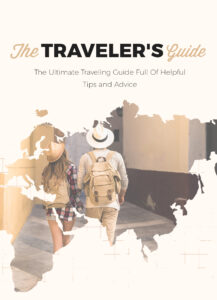Travel Writing: Crafting Engaging Stories

Before diving in, please note: This post is for informational purposes only. If you’d like to know more about how we approach topics, feel free to check out our friendly Disclaimer Page.
Hey there, amazing readers! 🖐️ Just a quick note: yes, we know there are a lot of ads here. Trust us, we get it—it’s not the prettiest look, but they help us keep this blog alive and kicking. Those pesky little ads cover the costs of all the behind-the-scenes magic, from hosting and tech stuff to creating content we hope you’ll love.
We’re committed to delivering quality posts, and your support (even just sticking around despite the ads) means everything to us. So, bear with us, and thanks for helping us keep the good vibes rolling. Now, on to the fun stuff! 😉
TRANSLATE BUTTON AT THE END OF THE ARTICLE
Introduction to Travel Writing
Travel writing is a captivating genre that allows writers to transport readers to distant lands through vivid descriptions, compelling narratives, and engaging storytelling.
Whether you are recounting your own adventures or researching and crafting stories about exotic locales, travel writing opens up a world of possibilities for both writers and readers.
From the bustling streets of Tokyo to the serene beaches of Bali, travel writing offers a unique opportunity to explore the world through the eyes of a storyteller.
This article will delve into the art of crafting engaging travel stories, exploring the essential elements that make for compelling narratives and providing tips on how to hone your skills as a travel writer.
Understanding the Elements of a Story
At the core of every engaging travel story lies a compelling narrative that draws readers in and transports them to the destination being described.
To craft a captivating story, it is crucial to understand the key elements that underpin a successful narrative.
These elements include setting the scene, developing well-rounded characters, incorporating dialogue, using sensory detail, creating tension, and crafting a strong opening and closing.
By weaving these elements together seamlessly, writers can create stories that resonate with readers and leave a lasting impact.
Finding Your Unique Voice as a Writer
One of the most important aspects of travel writing is developing your own unique voice as a writer.
Your voice is what sets you apart from other writers and gives your stories a distinct personality.
Whether you have a witty, humorous tone or a more introspective and reflective style, finding your voice will help you connect with your audience on a deeper level.
Experiment with different writing styles, tones, and perspectives to discover what feels most authentic to you.
Remember, authenticity is key in travel writing, so don’t be afraid to let your personality shine through in your writing.
Choosing the Right Destinations to Write About
When it comes to selecting destinations to write about, it’s essential to choose locations that inspire you and resonate with your interests and passions.
Whether you have a love for history, culture, food, adventure, or nature, selecting destinations that align with your interests will make your writing more authentic and engaging.
Additionally, consider the uniqueness and appeal of the destination to your target audience.
Writing about lesser-known or off-the-beaten-path locations can offer a fresh perspective and intrigue readers who are seeking more than just the typical tourist experience.
The Importance of Detailed Descriptions
Detailed descriptions are the cornerstone of effective travel writing.
Paint a vivid picture for your readers by using descriptive language that engages all the senses.
Describe the sights, sounds, smells, tastes, and textures of the destination in a way that transports readers right into the heart of the experience.
Whether you are exploring a bustling market in Morocco or hiking through the misty mountains of Peru, detailed descriptions will make your stories come alive and leave a lasting impression on your audience.
Creating Compelling Characters in Your Stories
Incorporating compelling characters into your travel stories can add depth and complexity to your narratives.
Characters can be local residents, fellow travelers, tour guides, or even animals you encounter along the way.
Develop these characters through vivid descriptions, dialogue, and actions that reveal their personalities and motivations.
By creating relatable and engaging characters, you can humanize your stories and provide readers with a window into the lives of the people who inhabit the destinations you are writing about.
Incorporating Dialogue and Conversations
Dialogue is a powerful tool in travel writing that can bring your stories to life and add authenticity to your narratives.
Incorporate conversations you have with locals, fellow travelers, or tour guides to provide insights, anecdotes, and personal experiences that enhance your storytelling.
Use dialogue to reveal character dynamics, convey emotions, and showcase the unique voices and perspectives of the people you encounter on your travels.
Dialogue can create intimacy and connection with your readers, making them feel like they are right there with you on your journey.
Using Sensory Detail to Bring Scenes to Life
Sensory detail is essential in travel writing to evoke the sights, sounds, smells, tastes, and textures of a destination.
Engage all the senses in your descriptions to create a multi-dimensional experience for your readers.
Discover "The Traveler’s Guide: Your Ultimate Companion for Every Adventure ✈️"
Describe the vibrant colors of a bustling market, the fragrant aromas of street food stalls, the melodic sounds of a local musician, or the feel of the warm sun on your skin.
By incorporating sensory detail into your writing, you can transport readers to the destination and immerse them in the sensory richness of the experience.
Adding Pacing and Tension to Your Narratives
Pacing and tension are crucial elements in travel writing that keep readers engaged and invested in your stories.
Vary the pacing of your narratives by incorporating moments of tension, suspense, and excitement interspersed with slower, reflective passages.
Build anticipation, create conflict, and maintain a sense of momentum throughout your story to keep readers on the edge of their seats.
By carefully crafting the pacing and tension in your narratives, you can create a dynamic and compelling reading experience that captivates your audience from start to finish.
Crafting a Strong Opening and Closing
The opening and closing of your travel stories are the bookends that frame your narrative and leave a lasting impression on your readers.
Start your story with a strong hook that grabs readers’ attention and sets the tone for the rest of the piece.
Introduce the destination, establish the mood, and pique readers’ curiosity right from the beginning.
Similarly, craft a memorable closing that provides a sense of resolution, reflection, or insight that ties the story together and leaves readers with a sense of closure.
A strong opening and closing will bookend your narrative effectively and leave a lasting impact on your audience.
Editing and Revising Your Travel Stories
Editing and revising are essential steps in the travel writing process to polish your stories and ensure they are clear, concise, and engaging.
After completing a draft of your story, take the time to review and revise it for clarity, coherence, grammar, spelling, and punctuation.
Cut unnecessary words, tighten sentences, and refine your descriptions to make your writing more impactful.
Consider seeking feedback from peers, editors, or writing groups to gain fresh perspectives and valuable insights on how to improve your storytelling.
Remember, great travel writing often involves multiple rounds of editing and revision to refine your stories to their utmost potential.
Tips for Getting Published as a Travel Writer
Getting published as a travel writer can be a rewarding but competitive endeavor.
To increase your chances of success, consider the following tips:
Research potential publications that align with your style and content.
Study submission guidelines carefully and adhere to formatting requirements.
Build a strong portfolio of published work to showcase your writing skills.
Network with other writers, editors, and industry professionals to gain insights and opportunities.
Attend writing conferences, workshops, and events to hone your craft and make connections.
Pitch your story ideas to editors with a clear, concise, and compelling query letter.
Be persistent, patient, and open to feedback and rejection as part of the publishing process.
Consider self-publishing or starting a travel blog to showcase your work and build an audience.
Embrace social media and digital marketing to promote your writing and engage with readers.
Stay true to your voice, style, and vision as a writer and continue to grow and evolve in your craft.
Conclusion
In conclusion, travel writing is a dynamic and engaging genre that offers writers the opportunity to explore the world, connect with readers, and share their unique perspectives and experiences.
By understanding the essential elements of storytelling, finding your unique voice, choosing the right destinations, incorporating detailed descriptions, creating compelling characters, using dialogue and sensory detail, adding pacing and tension, crafting strong openings and closings, editing and revising your stories, and seeking publication opportunities, you can hone your skills as a travel writer and captivate audiences with your narratives.
So pack your bags, grab your notebook, and embark on a literary journey that will transport readers to far-off lands and inspire a sense of wanderlust and adventure.
Happy writing!

The Enlightenment Journey is a remarkable collection of writings authored by a distinguished group of experts in the fields of spirituality, new age, and esoteric knowledge.
This anthology features a diverse assembly of well-experienced authors who bring their profound insights and credible perspectives to the forefront.
Each contributor possesses a wealth of knowledge and wisdom, making them authorities in their respective domains.
Together, they offer readers a transformative journey into the realms of spiritual growth, self-discovery, and esoteric enlightenment.
The Enlightenment Journey is a testament to the collective expertise of these luminaries, providing readers with a rich tapestry of ideas and information to illuminate their spiritual path.
Our Diverse Expertise 🌟
While our primary focus is on spirituality and esotericism, we are equally passionate about exploring a wide range of other topics and niches 🌍📚. Our experienced team is dedicated to delivering high-quality, informative content across various subjects ✨.
To ensure we provide the most accurate and valuable insights, we collaborate with trusted experts in their respective domains 🧑🏫👩🏫. This allows us to offer well-rounded perspectives and knowledge to our readers.
Our blog originally focused on spirituality and metaphysics, but we’ve since expanded to cover a wide range of niches. Don’t worry—we continue to publish a lot of articles on spirituality! Frequently visit our blog to explore our diverse content and stay tuned for more insightful reads.






